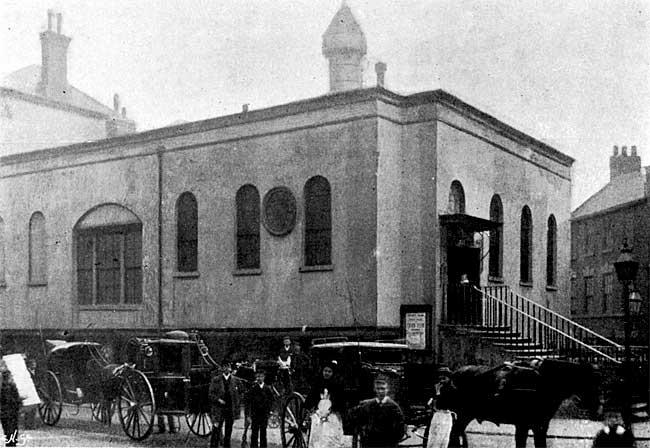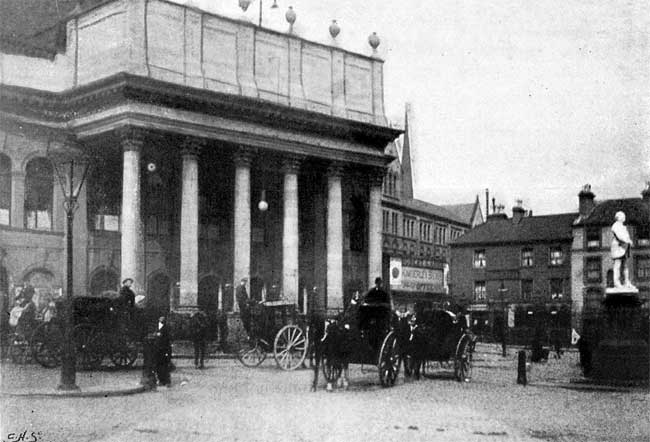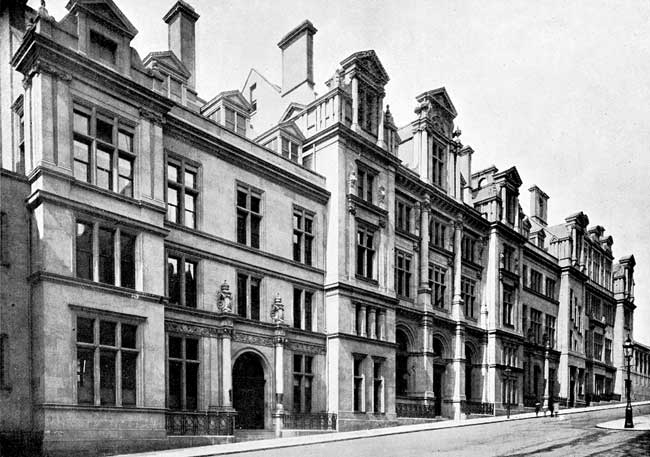< Previous | Contents | Next >

The Old Guildhall.
In the old Guildhall in Week Day Cross, now superseded by the new building, few features of interest were present if we except its entire lack of architectural pretension, the structure in fact having more the appearance of an ancient Bridewell than that of the seat of the most important municipal offices of a wealthy corporation.
The Theatre Royal.

Theatre Royal and Morley Statue.
Enthusiastic in their amusements as in their daily occupations, the inhabitants of the city have ever been warm supporters of the drama, and in the splendid Theatre Royal possess one of the finest and best managed establishments of the kind in the provinces. Situated at the head of Market Street, the Theatre occupies a space of about a quarter of an acre of ground, on which the present building was erected in 1865, and subsequently enlarged and improved from the designs of Mr. Phipps, F.S.A. The house has seating capacity for some three thousand persons; is replete with every modern convenience, and has in its time given accommodation to the leading English and foreign touring companies and all the stars of the dramatic and operatic world. Facing the Theatre is the fine statue erected to the memory of the late Samuel Morley, one of Nottingham's greatest benefactors and most public-spirited citizens.
The Principal Thoroughfares.
In addition to the Market Place, upon which mostly converge the principal streets, the city is intersected at all points by broad and handsome boulevards and the chief business thoroughfares, which include Derby Road, Clumber Street, Milton Street, High Street, Bridlesmith Gate, Smithy Row, Cheapside, and Victoria Street, which forms the central site of many fine buildings—such as the Notts County Club, the Conservative County Club, the School Board offices, the most important Insurance Companies' offices, and other imposing edifices suggestive of the wealth and prosperity of the community.

General Post Office.
A much-needed improvement lately effected has been the erection of the splendid block of new buildings to which the business of the General Post, telegraph, and parcel-post offices has been removed. These departments of the public service were formerly located in a building which ultimately became quite inadequate to the increasing requirements of the commercial and manufacturing classes, and the Government have accordingly provided the new premises, completely equipped in every respect, and, as will be seen in our view, furnishing a very attractive addition to the architectural features of the town.
